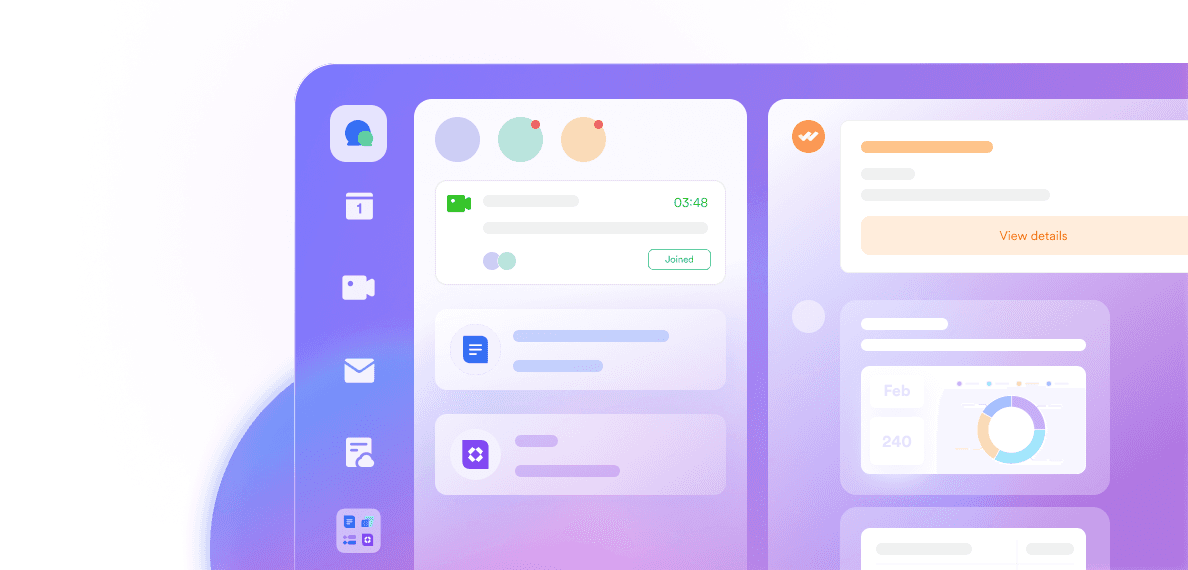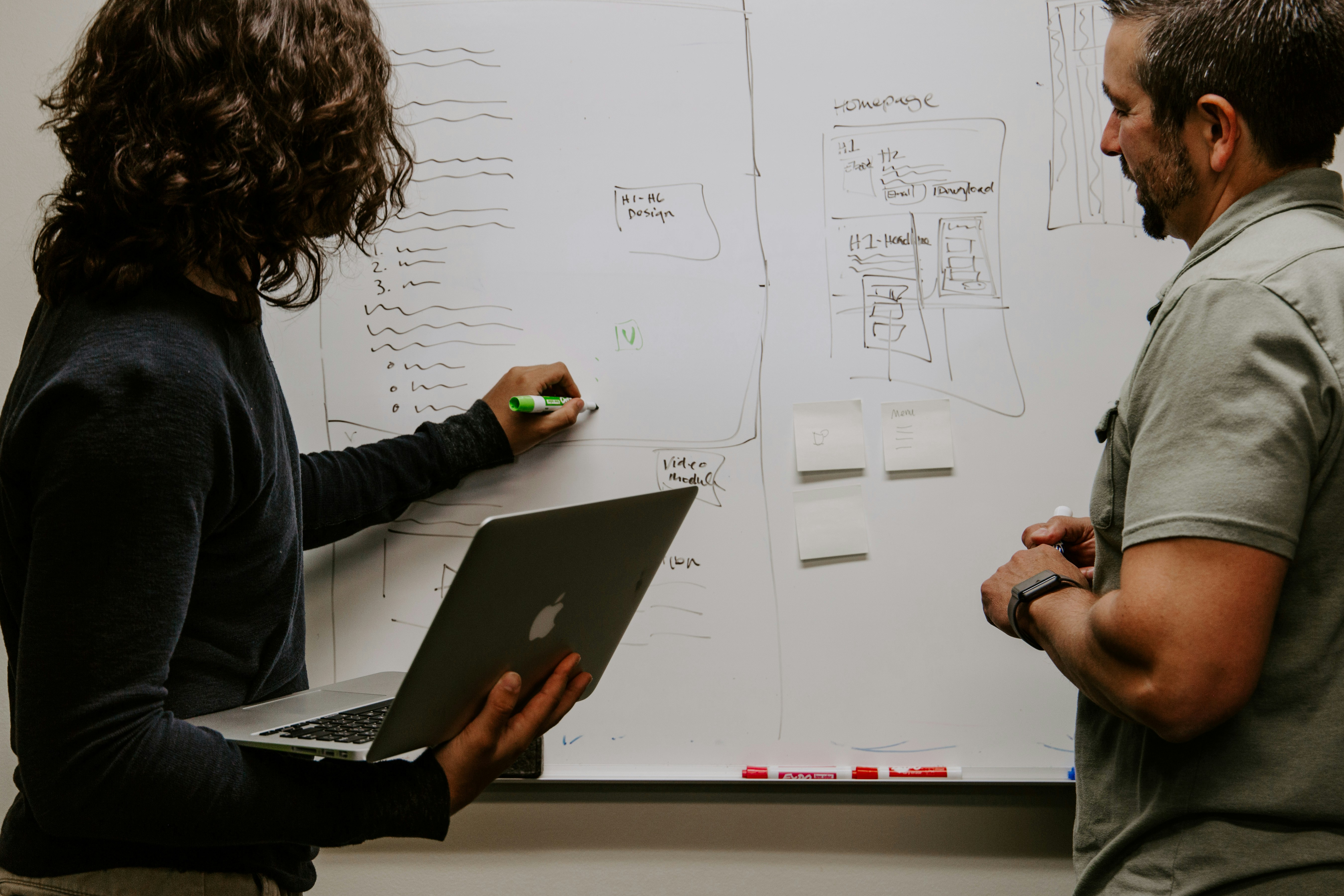Creating a mechanism that empowers teams and fosters innovation is essential for maintaining competitiveness. ByteDance, the company behind not only Lark but also a few other global sensations, has implemented unique practices to empower employees to work efficiently and creatively, driving its growth over the years.
It's not just about assigning tasks or powers, but also about cultivating a collaborative ecosystem where information flows and intelligent decisions are made collectively with efficiency.
Let's unfold ByteDance's best practices together ⬇️
1. Same-page meetings
We all want to avoid long and unproductive meetings that stray from the main topic. Taking inspiration from Amazon's practice of using six-page memos, the teams at ByteDance have adopted a similar approach called the same-page meeting method. This method promotes focused and efficient discussions.
Before the meeting, the organizer prepares a document that outlines the discussion points. Participants are encouraged, but not required, to read this document beforehand. Often, the documents can be accessed through a meeting group created directly from the meeting invitation.

At the beginning of the meeting, there will be a 15-minute period of collective, silent reading. During this time, participants can comment on the document. The only sound you might hear is the tapping of keyboards. These annotations will gather everyone's feedback and suggestions, which will then drive a structured discussion led by the organizer.
After the reading and commenting period, the meeting organizers will usually highlight the comments while sharing the screen. They will go through all the feedback one by one, making sure to address and resolve every concern during the meeting.

Since teams are spread across different continents, meetings at ByteDance are often recorded. This allows people in different time zones to catch up at their convenience. They can listen to the recording and read the transcripts at their own pace and during their own working hours.
The result? Clear, actionable conclusions and context for every meeting, without meaningless chatter. Here is a checklist to follow if you want to try the same-page meeting approach.
Pre-Meeting Preparation:
The organizer should draft a document outlining the topics to be discussed.
Share the document online with all participants before the meeting. Encourage a pre-meeting review, although it's not mandatory.
Meeting Kick-Off:
Start the meeting with a collective 15-minute silent reading of the document.
Participants can make comments on the document if they have any concerns or questions. They can also respond to others' comments for further clarification.
Discussion and Resolution:
The organizer should lead the discussion on all comments in the order they were made. If necessary, address the questions one by one in comment review mode.
The team aims to resolve issues and clarify solutions during the discussion.
Alignments:
For topics that received no comments, assume a general consensus and move on to avoid excessive communication during the meeting.
Action Steps and Accountability:
Clearly define the next steps and assign responsibilities to each team member.
Mention responsible individuals by tagging them in the document at the appropriate place, ensuring they receive notifications and understand the context in Lark.
Post-Meeting Follow-Up:
Ensure all participants have access to the updated document with resolved queries and next steps.
Monitor the progress of action items and ensure responsible individuals are on track with their tasks.
2. Asynchronous communication first
Teams at ByteDance embrace asynchronous communication due to the nature of their business. Creativity can arise at any time, and being in the same time zone is not a must to inspire the team and the business. Additionally, team members work and live in different parts of the world.
Instead of immediate reactions, team members have the opportunity to process information and respond thoughtfully. Before scheduling a meeting, it is important to reflect on whether a live meeting is necessary or if the discussion can be handled through asynchronous communication.
At ByteDance, many discussions that traditionally occur in meetings have successfully transitioned to asynchronous communication channels. This shift saves time for each team member and promotes a culture of deliberate and focused communication.

The solution? Instead of relying on flashy slides in PowerPoints, try documenting your thoughts and ideas in a written format that focuses on information. By sharing this document with colleagues and utilizing the comment feature for focused discussions, you can often eliminate the need for live meetings.
There may be occasions when words alone are not sufficient to explain your next big idea, and that's okay. Consider sharing your thoughts through a recorded video demo, where you can walk through ideas while sharing your screen. Teams often use the screen recording feature in Lark to capture ideas visually and share them with teammates. This allows others to absorb the information at their own pace and respond when they are ready.

This method of communication respects individual workflows, reduces meeting fatigue, and ensures that ideas are communicated clearly and effectively. Through asynchronous communication, ByteDance has achieved a high level of efficiency and precision, setting a vibrant example for modern-day corporate communication.
3. From emails to docs: add deep thinking to words
Emails are not broken; however, they are often misused in many situations. We have all experienced being added to an email thread filled with more "sounds good to me" than actual useful content, or scrolling through a long thread only to discover it has expired.
As ByteDance has progressed, Lark Docs has replaced emails as a means not only to exchange information but also to collaborate, think, and engage. Lark Docs provides more space, formatting options, and organization features to transform thoughts into action plans, product designs, or lists of key tasks for your Q4 marketing campaign. Comments enable the exchange of ideas, while likes indicate consensus and encouragement. Additionally, docs serve as a reliable and up-to-date source of truth.
Documents have the potential to serve multiple purposes at ByteDance. They can be used as personal blogs to record thoughts and ideas at work, as introductions when joining a new team, or as compilations of useful resources and FAQs for colleagues. This versatility allows a document to take on various forms at ByteDance, serving as an ice breaker, a help desk, or a hub of knowledge.
4. A self-driving onboarding journey
The onboarding journey for every new employee at ByteDance is designed to cultivate self-drive. New hires receive a comprehensive onboarding document via Lark, which serves as a roadmap to the team's culture, expectations, and resources. This document sets them up for success right from the start.
However, new employees are not solely provided with a document to engage with. The advantage of receiving an onboarding document is that it offers resources for all their needs, including company policies, scope of work, commonly used tools, and more.

It also includes an up-to-date list of contacts that can be reached out to for any questions. Instead of wasting time searching for documents and contacts, the onboarding document serves as a live map to guide everyone's journey at ByteDance.
Moreover, onboarding documents can be creatively utilized to help new hires feel oriented and focused. With the flexibility of Lark Docs' blocks, teams can incorporate features like group invitations, team structure diagrams, and more, ensuring that new hires have a clear path to navigate their new job.
5. From folders to one-pagers: Make information more accessible
ByteDance's approach to knowledge management focuses on simplicity and accessibility, with the added goal of saving time. Instead of spending time moving documents between different folders, documents are used as a new way of organizing everything. Rather than receiving a link to a folder, a one-pager is provided that directs users to relevant documents, sheets, or databases related to a specific topic.
Consolidating document links onto one page can also be time-consuming. To address this, ByteDance introduced universal search in Lark, allowing users to easily find what they need, whether it's documents, group chats, messages, or meeting invites, through a search bar. This feature helps employees efficiently locate information, particularly when additional context is urgently required and counterparts are unavailable due to time zones.
Replacing traditional folders with a single document that hosts all crucial resources ensures that information is just a click away, promoting a culture of continuous learning and sharing.
6. Self-serve is possible!
The powerhouse cannot operate without strong support in the background. That is why ByteDance has made substantial investments in streamlining internal processes and supporting employees in their work life. As a result of this commitment, Lark was created to consistently and sustainably empower internal operations.

In addition to a centralized document that contains information, content, and helpful resources for every employee to access, there are internal help desks available to address various inquiries related to HR, administration, IT, and more. Each help desk is staffed by a smart bot that matches the right answers and resources to an employee's question.
Teams at ByteDance do not need to refer to a lengthy employee handbook to find answers to policies. With a smart bot that understands the context, self-service becomes more efficient and accessible for any questions employees may have.
7. OKR is a compass
Integrating Objectives and Key Results (OKR) into daily workflows has made goal management a practical and integral part of ByteDance's culture. It's not just about chasing arbitrary targets, but rather aligning individual efforts with the larger organizational narrative. What's even better is that at ByteDance, OKRs are not isolated, but interconnected goals and actions.

In addition to adding and updating OKRs, teams at ByteDance have the ability to view each other's OKRs from their profiles. They can also add comments, set alignments, or tag relevant individuals for collaborative efforts. This feature provides a compass for individual efforts and showcases how colleagues collaborate to achieve larger goals.
Conclusion
The essence of ByteDance's practices is to create an environment that fosters creativity, collaboration, and efficiency. It aims to establish a workplace where every member has the necessary information to make informed decisions, driving the collective towards remarkable success.
As businesses worldwide are embracing more flexible, innovative, and efficient workspaces, ByteDance's practices offer a fresh perspective for companies seeking to cultivate a culture of empowered, self-driven teams.
Lark, the tool developed by ByteDance, enables the best practices at ByteDance is shaped by the company's way of working. To explore the tips, tricks, and ethos for your own company, reach out to the Lark team for free demos.
















